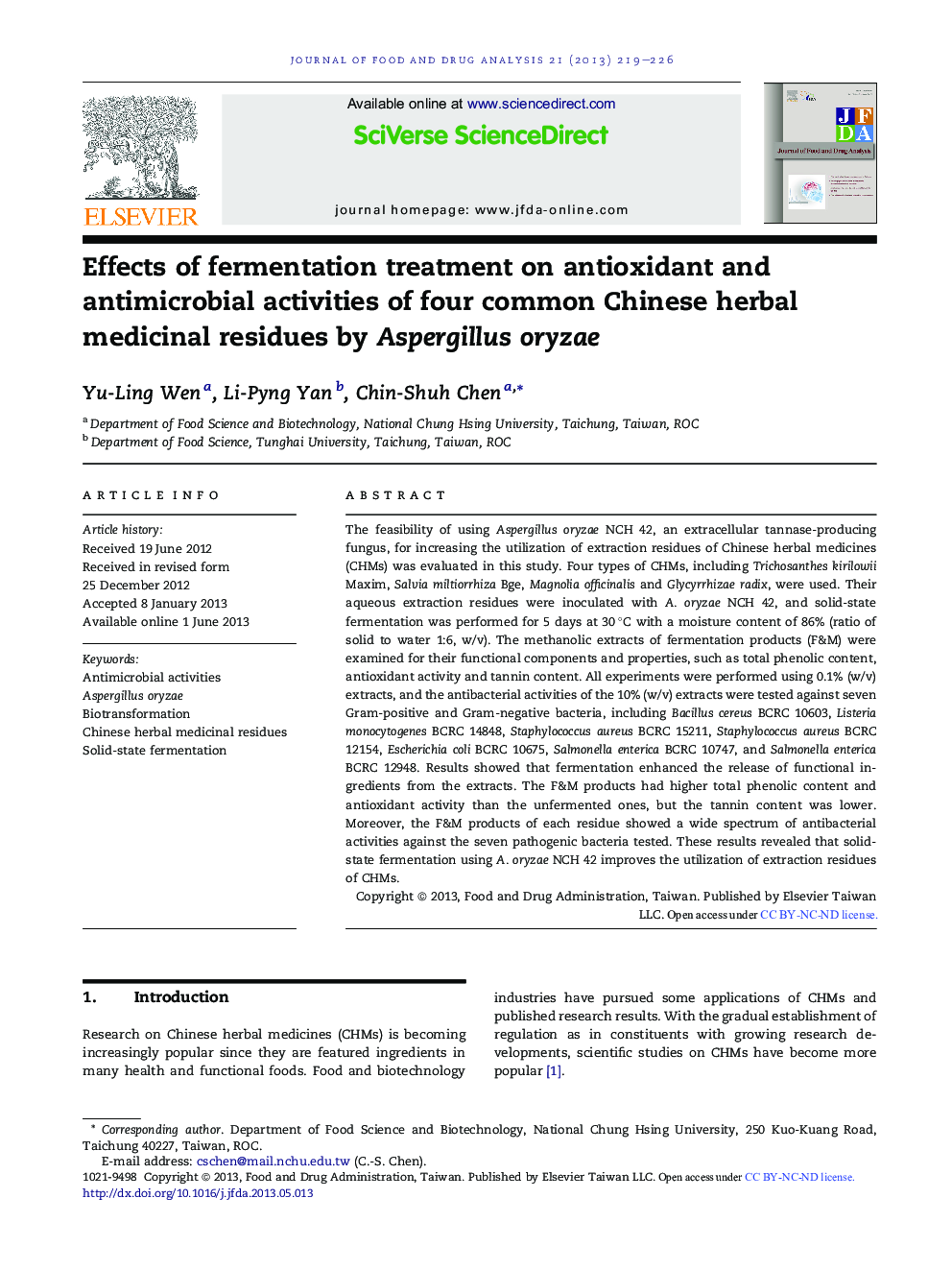| Article ID | Journal | Published Year | Pages | File Type |
|---|---|---|---|---|
| 2507500 | Journal of Food and Drug Analysis | 2013 | 8 Pages |
The feasibility of using Aspergillus oryzae NCH 42, an extracellular tannase-producing fungus, for increasing the utilization of extraction residues of Chinese herbal medicines (CHMs) was evaluated in this study. Four types of CHMs, including Trichosanthes kirilowii Maxim, Salvia miltiorrhiza Bge, Magnolia officinalis and Glycyrrhizae radix, were used. Their aqueous extraction residues were inoculated with A. oryzae NCH 42, and solid-state fermentation was performed for 5 days at 30 °C with a moisture content of 86% (ratio of solid to water 1:6, w/v). The methanolic extracts of fermentation products (F&M) were examined for their functional components and properties, such as total phenolic content, antioxidant activity and tannin content. All experiments were performed using 0.1% (w/v) extracts, and the antibacterial activities of the 10% (w/v) extracts were tested against seven Gram-positive and Gram-negative bacteria, including Bacillus cereus BCRC 10603, Listeria monocytogenes BCRC 14848, Staphylococcus aureus BCRC 15211, Staphylococcus aureus BCRC 12154, Escherichia coli BCRC 10675, Salmonella enterica BCRC 10747, and Salmonella enterica BCRC 12948. Results showed that fermentation enhanced the release of functional ingredients from the extracts. The F&M products had higher total phenolic content and antioxidant activity than the unfermented ones, but the tannin content was lower. Moreover, the F&M products of each residue showed a wide spectrum of antibacterial activities against the seven pathogenic bacteria tested. These results revealed that solid-state fermentation using A. oryzae NCH 42 improves the utilization of extraction residues of CHMs.
